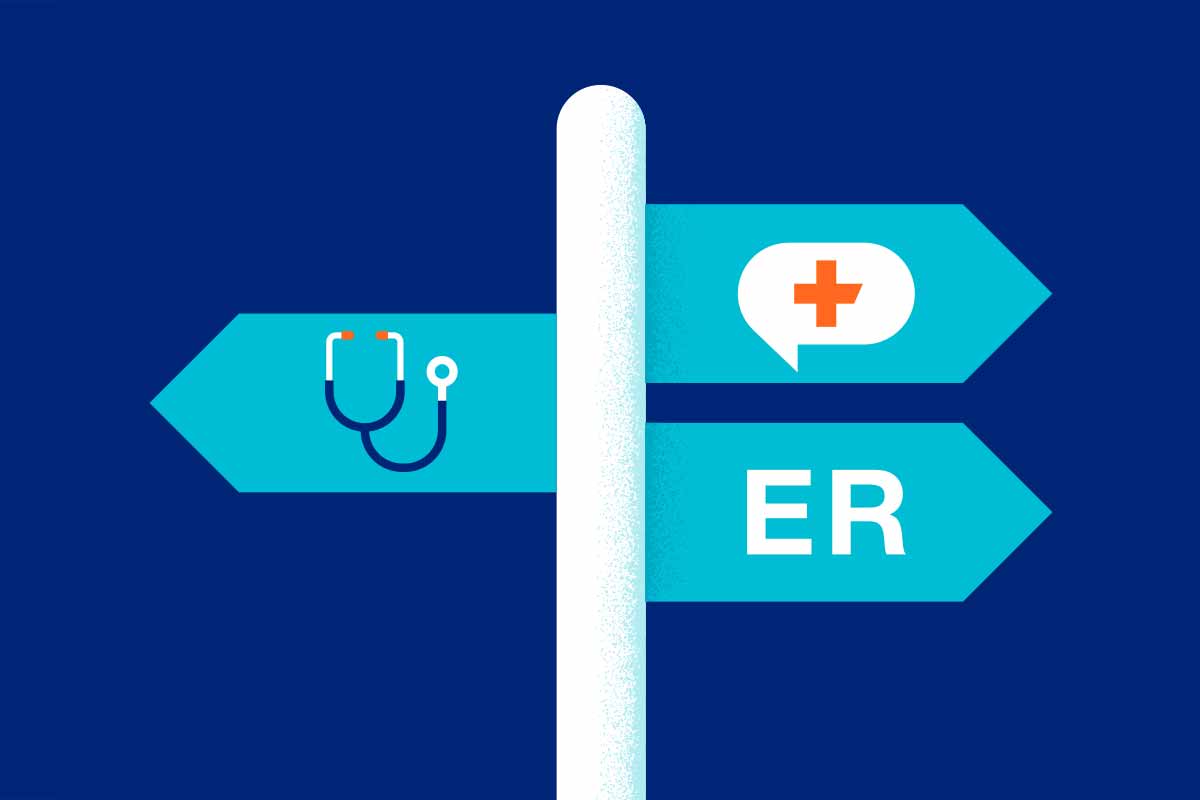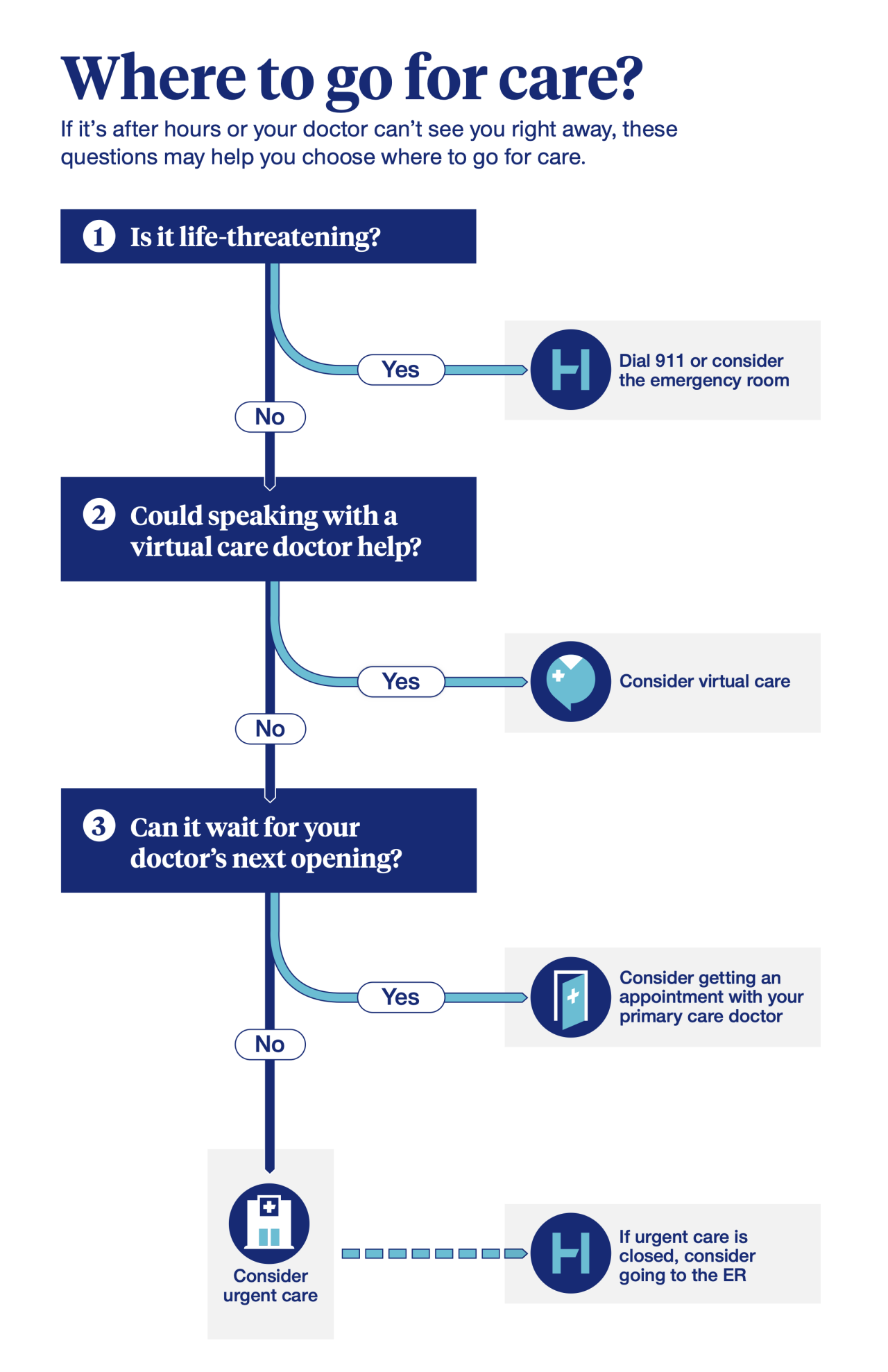ER vs. urgent care vs. virtual visit

It’s 6 p.m. Your child just spiked a fever or developed a painful ear infection. Or you’ve tripped and can’t put weight on your foot. It can be confusing to know where to turn with a sudden medical issue when your doctor’s office is closed. You have your hospital emergency room always there and ready to handle the most critical medical situations. But there’s also urgent care or virtual care, which could save you lots of time and hundreds of dollars. Here’s a look at each option:
- Emergency Room — In a life-threatening situation, call 911 or go to your hospital ER. They’re open 24/7 and equipped to address the most complex or critical needs, including life-threatening crises like heart attacks or traumatic injuries. The highest level of care comes at a cost — around $2,6001 per visit on average.
- Urgent Care — These same-day clinics may be a good choice when you have an illness or injury you’d normally just see your doctor for, but you can’t get an appointment and it can’t wait. Consider urgent care for things like fever, moderate flu symptoms, ear infection or stomach pain or anything that you’d need addressed in person, like a cut that looks like it might need stitches, a sprained ankle or a test for an illness like strep throat.
- Virtual care — Telemedicine can be a great alternative to urgent care if you don’t need in-person, hands-on care. Doctors can diagnose and prescribe treatment for things like asthma flare-ups, flu, headache, joint pain and more during a video visit.
If your doctor or insurance company has a nurse line, call them for advice. Otherwise, if you're not in pain, try rest and fluids, and call your primary care doctor in the morning.
3 questions to ask before heading to get care


